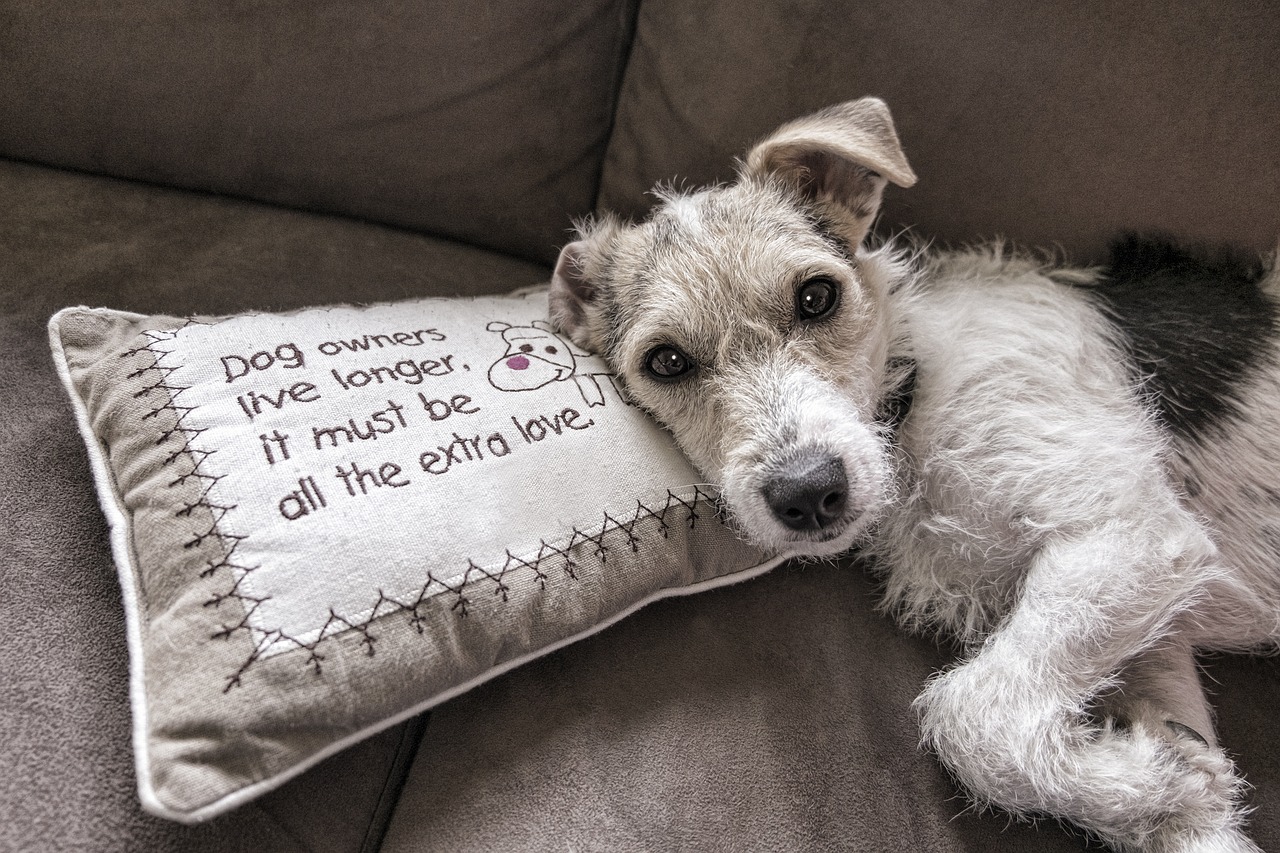Keeping your dog off the furniture is controversial. Some owners love it when their dog snuggles beside them, while others may feel that the couch is no place for a dog. Whatever your initial reaction, training your dog to keep off the furniture has several benefits for you and your furry friend.
First, there’s hygiene to consider. Dog fur, dirt, and occasional accidents can quickly make your sofa a mess, requiring frequent cleaning. Limiting your dog’s access to furniture can reduce the risk of allergies for family members sensitive to pet dander, which can be hard to clean without deep cleaning products or professional assistance. Behavioral reasons are equally important. Dogs allowed on furniture might become possessive of these spaces, leading to aggression or territorial behavior when others try to sit down. Your furniture should be your own, just as your dog has its places to relax away from others.
You don’t have to train your dog to keep off furniture, but it is a valid option for those looking to keep their home cleaner and safer for everyone under the roof. If you are looking for tips to reinforce this behavior, look no further.
Successfully Train Your Dog to Stay Off the Furniture
Establish Clear Boundaries: Clear boundaries help your dog understand exactly what you are trying to reinforce and minimize confusion. Define which areas are off-limits from the start. Every family member should follow the same rules and be on the same page regarding training, lest your dog learn which family members are okay with breaking the rules. When your dog attempts to get on the furniture, use a firm but gentle “no” or “off” command, then guide them to an appropriate spot like their bed. Patience and persistence without anger will help your dog learn which areas are out of bounds over time.
Create an Inviting Alternative Space: A comfortable and inviting alternative space can keep your dog off the furniture, even making them more inclined to go elsewhere. For most dogs, a dog bed that suits their size and comfort needs will be appealing. Placing the bed somewhere in your home where your dog can still feel involved in family activities, like in the living room, helps maintain their sense of belonging and easily allows you to shepherd them off furniture to their new resting spot. Positive reinforcement through praise and rewards, whenever they choose their bed over the furniture, helps your dog associate their bed with positive experiences over the long term.
Utilize Physical Barriers: Physical barriers can be effective in keeping your dog off the furniture, especially when you’re not around to supervise. Baby gates or pet barriers can block access to certain rooms or areas, but this isn’t the ideal permanent solution for some homes. For temporary solutions, placing laundry baskets, upside-down chairs, or other obstacles on the furniture can deter your dog from climbing up. Gradually removing these barriers as your dog learns to stay off the furniture helps them understand the boundaries without always needing the physical blocks.
Implement Effective Command Training: Use clear commands like “off” or “no” whenever your dog tries to climb onto the furniture, and keep these commands consistent over time. Avoid inviting your dog onto the furniture to practice commands, which can create mixed signals and confusion. Instead, only use commands when necessary. After many failed attempts to secure a resting place on the furniture, your dog will associate staying off the furniture with positive reinforcement and will be more likely to obey even when you’re not watching.
Regular Monitoring and Adjustment: You should frequently check to see if your dog adheres to the rules, especially during the initial stages of training. Be ready to adjust your training methods if your dog isn’t responding as expected. Sometimes, a slight change in approach can make a big difference. Every dog is different, and they may require a unique touch to help them understand precisely what is being asked of them.
Don’t give up if training seems to be going nowhere. Unlike the common refrain, almost every single dog, regardless of age, can learn new tricks. If you are struggling with training and need assistance or further help, contact Gulf Coast K9 Dog Training today for info on training classes and boarding programs.





